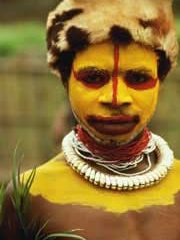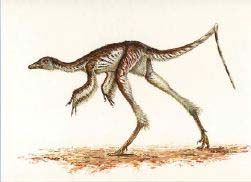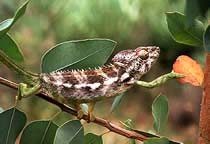Life Sciences and Chemistry
Articles and reports from the Life Sciences and chemistry area deal with applied and basic research into modern biology, chemistry and human medicine.
Valuable information can be found on a range of life sciences fields including bacteriology, biochemistry, bionics, bioinformatics, biophysics, biotechnology, genetics, geobotany, human biology, marine biology, microbiology, molecular biology, cellular biology, zoology, bioinorganic chemistry, microchemistry and environmental chemistry.

Early humans dressed for dinner
Sophisticated jewellery appeared with social events.
Our early ancestors glammed-up for a get-together. Humans worldwide began wearing jewellery at the same time as groups started meeting up, say US researchers. The finding counters the idea that ’modern’ behaviour swept the globe when modern humans migrated out of Africa.
Mary Stiner and her colleagues unearthed ancient necklaces at three sites in Asia, Africa and Europe. Residents of Kenya around 40,000 years ago

Nitric oxide plays a vital role in the formation of long-term memory in snails
Snails can teach us a great deal about how we form memories, according to a group of neuroscientists at the University of Sussex.
Research by Dr Ildikó Kemenes, Professor Paul Benjamin, Professor Michael O’Shea and colleagues shows that nitric oxide plays a vital role in the formation of long-term memory in snails. This is of crucial importance because the gas has already been shown to play such a role in humans and other mammals.
Ideally, scientists would like to use mammals to st

Diminutive Dinosaur from China Sheds Light on Bird Evolution
Tyrannosaurus rex , Apatosaurus and the other dinosaur giants capture the popular imagination. But paleontologists often focus on smaller fry – especially with regard to the origin of birds, which are believed to have evolved from petite, predatory dinosaurs. Researchers describe one such specimen — the partial skeleton of a previously unknown genus of chicken-size dinosaur that roamed China’s Liaoning province nearly 130 million years ago — today in the journal Nature. According to

Bio-Rad Develops Fully Automated Testing System For BSE
Bio-Rad Laboratories Inc., multinational manufacturer and distributor of life science research products and clinical diagnostics, has announced the creation of a complete solution for automated BSE (bovine spongiform encephalopathy, or mad cow disease) testing. This highly scalable platform is the first testing system of its kind, providing both screening and confirmation testing capabilities all in one package, and will enable laboratories to reduce staffing costs and increase the speed and security

Chameleons walk on water
Reptile history reveals daring escape from Madagascar
Land-lubber chameleons navigated the oceans to spread around the world. Stowed away on tree rafts, the animals were ferried to distant shores, new research suggests 1 .
Chameleons aren’t good swimmers: their mitten-like feet are made to grasp twigs and trees. Yet the intrepid animals charted the seas several times in the past 26 million years, say Chris Raxworthy of the American Museum of Natural History i

Cassava mealybug control : parasitoid wasps hold the kairomone key
The mealybug Phenacoccus herreni feeds on cassava plant sap, inducing shrivelling. It causes extensive damage in cassava growing areas in South America. However, it can be parasitized by two wasps, Acerophagus coccois and Aenasius vexans which act out a ritual to recognize and select the individuals they are going to parasitize. A wasp moves from one side to the other of a potential victim, investigating it by palpation with their antennae. Once this “drumming and turning” procedure completed, the wa